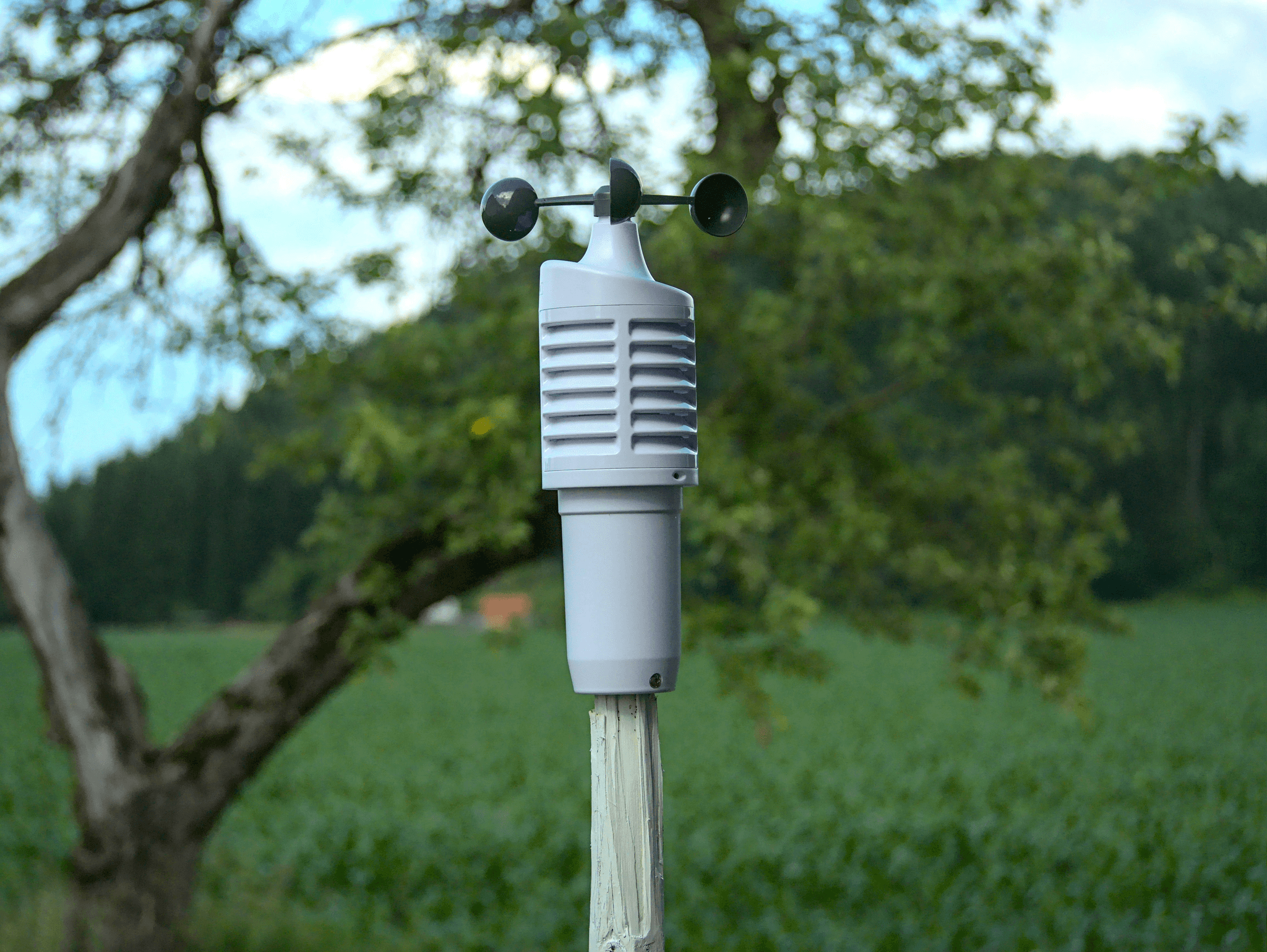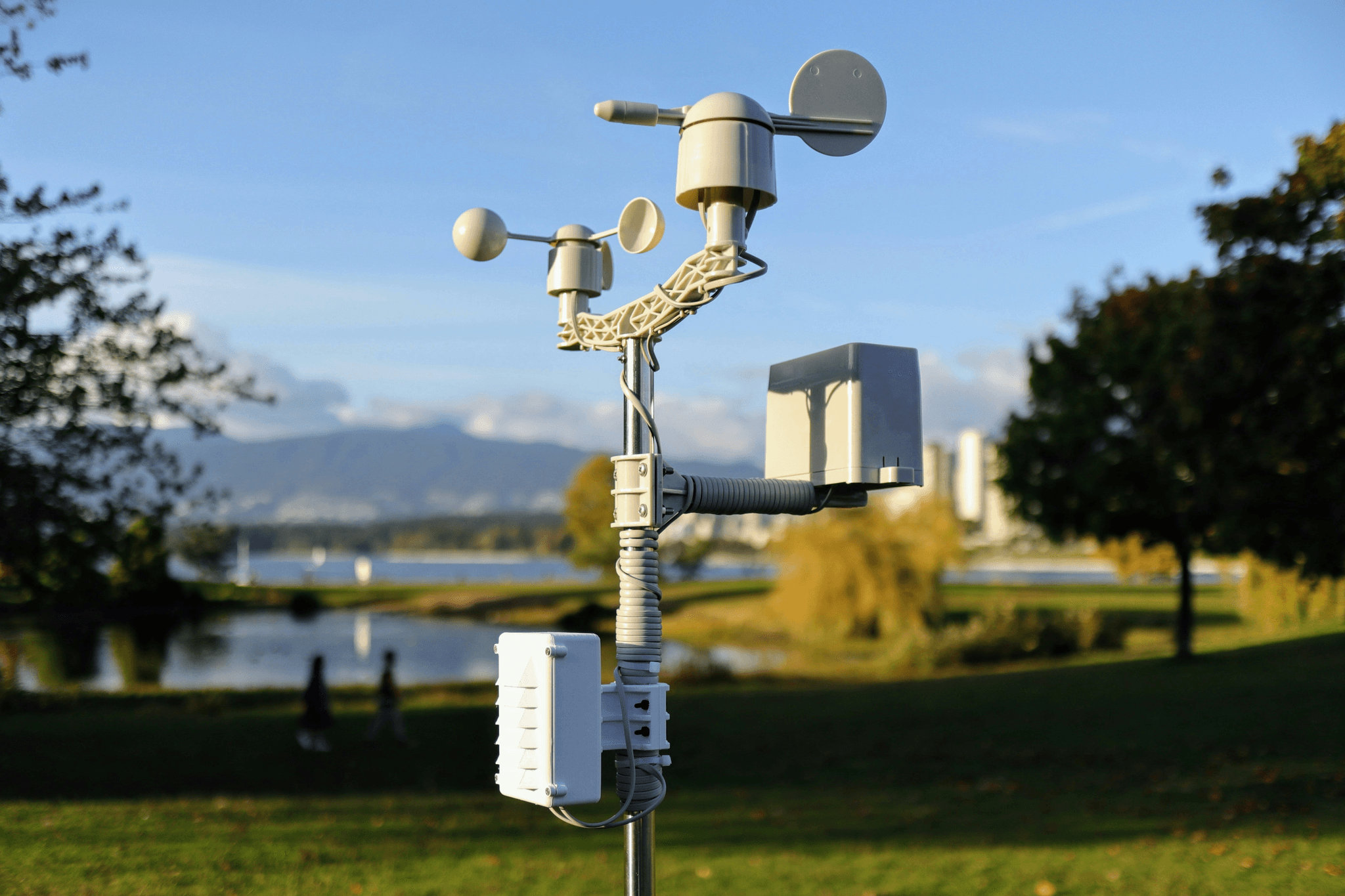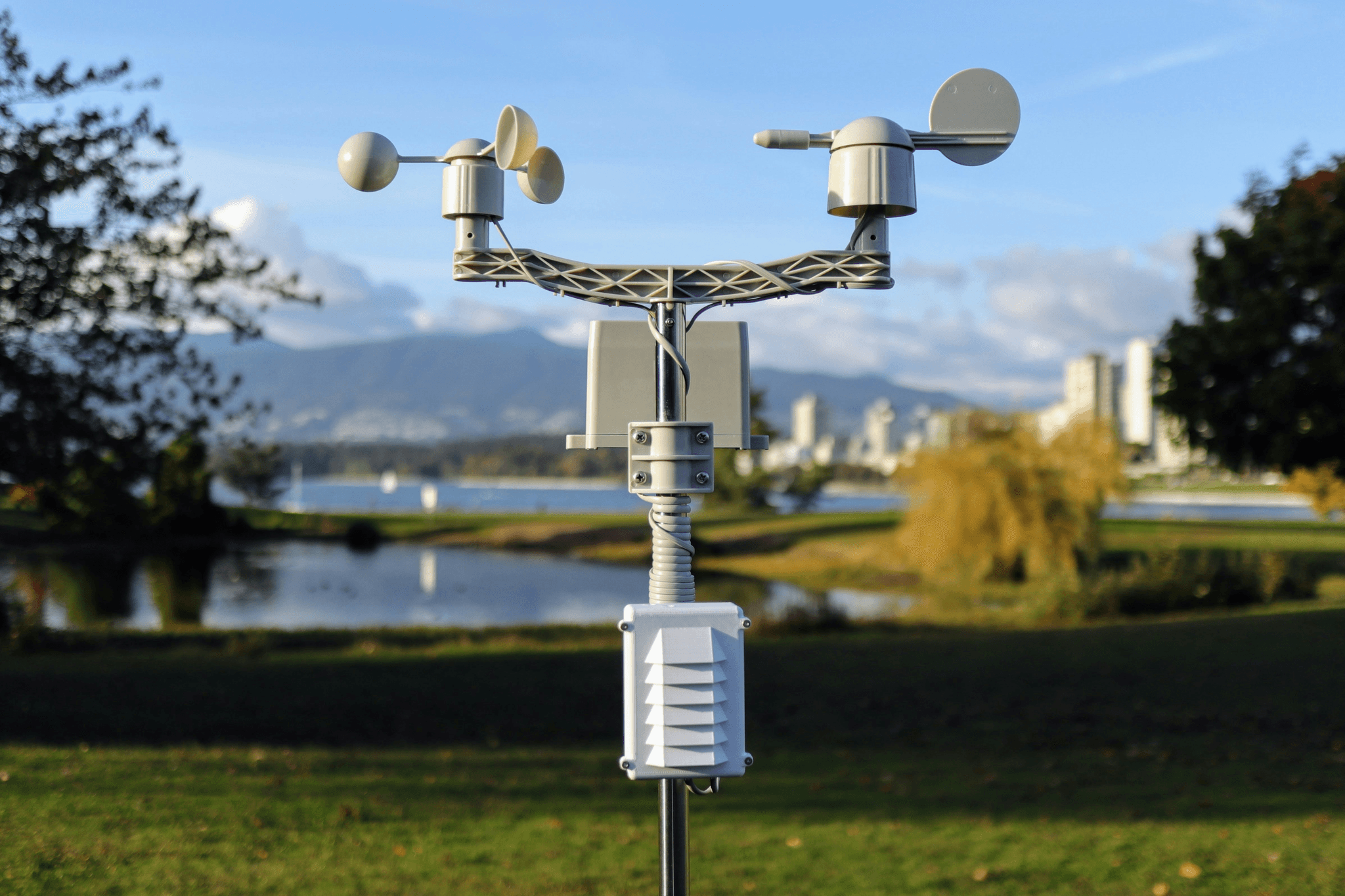Introduction

Airport weather monitoring is a critical aspect of ensuring safe and efficient flight operations. By utilizing advanced technology, airports can gather real-time weather data to make informed decisions for air traffic control and pilot navigation. Automated airport weather stations, such as Haisen's Aviation Automatic Weather Observation Station, play a pivotal role in this process.
Importance of Airport Weather Monitoring
Weather conditions have a significant impact on aviation safety and efficiency. Airports rely on accurate and up-to-date weather information to manage flight schedules, runway operations, and overall airport logistics. This ensures that pilots have the necessary data to make informed decisions during takeoff, landing, and in-flight navigation.
Core Features of Airport Weather Station Monitoring Systems
Airport weather station monitoring systems are equipped with advanced sensors that measure key meteorological parameters. These include temperature, wind speed and direction, visibility, cloud height, and atmospheric pressure. This data is crucial for ensuring safe flight operations and is utilized by air traffic controllers to manage air traffic flow.
In addition to measuring meteorological parameters, airport weather station monitoring systems also provide real-time data on precipitation, such as rain or snowfall. This information is vital for pilots and ground crews to make informed decisions about takeoff, landing, and ground operations. By accurately tracking precipitation levels, airport weather stations help prevent weather-related accidents and delays.
Haisen's Aviation Automatic Weather Observation Station
Haisen's Aviation Automatic Weather Observation Station is designed to provide continuous, real-time weather information at airports. It uses various sensors to measure parameters such as temperature, wind speed and direction, visibility, cloud height, and atmospheric pressure. This data is crucial for pilots and air traffic controllers to make informed decisions, ensuring safe and efficient flight operations.
In addition to the standard weather parameters, Haisen's Aviation Automatic Weather Observation Station also utilizes advanced sensors to detect phenomena such as turbulence, icing conditions, and lightning. This detailed information allows pilots to anticipate and prepare for potentially hazardous weather conditions, ultimately enhancing flight safety. Furthermore, air traffic controllers can use this data to efficiently manage air traffic flow and minimize delays caused by adverse weather.
Advanced Sensors

Airport weather station monitoring systems rely on advanced sensors to accurately measure and monitor weather conditions. These sensors play a crucial role in providing real-time data for pilots and air traffic controllers to make informed decisions.
High-precision Temperature Sensor
One of the key components of an automated airport weather station is the high-precision temperature sensor. This sensor is designed to provide accurate temperature readings, which are essential for flight operations and aviation safety. By continuously monitoring temperature changes, airports can ensure the safety of aircraft and passengers.
Furthermore, the high-precision temperature sensor plays a crucial role in ensuring the efficiency of airport operations. Accurate temperature readings are essential for determining runway conditions, de-icing procedures, and overall aircraft performance. By providing real-time data on temperature changes, this sensor enables airports to make informed decisions that contribute to the smooth and safe functioning of flight operations.
State-of-the-art Wind Speed and Direction Sensor
In addition to temperature, wind speed and direction are critical factors that impact aviation operations. Automated weather observing systems at airports use state-of-the-art sensors to measure wind speed and direction with precision. This information allows pilots to plan takeoffs, landings, and flight routes with confidence.
Furthermore, the accuracy of wind speed and direction measurements is crucial for ensuring the safety and efficiency of flight operations. State-of-the-art sensors are equipped with advanced technology that minimizes errors and provides real-time data to air traffic controllers and meteorologists. This allows for timely updates to weather forecasts and advisories, enabling pilots to make informed decisions based on the most current information available.
Cutting-edge Visibility Sensor
Visibility is another crucial parameter that airport weather stations monitor using cutting-edge visibility sensors. These sensors provide accurate data on visibility conditions, enabling pilots to assess the level of visibility during taxiing, takeoff, and landing procedures. This information is vital for safe and efficient flight operations.
Furthermore, visibility sensors are essential for providing real-time data on fog, mist, smoke, and other atmospheric conditions that can impact visibility. This information allows air traffic controllers to make informed decisions regarding runway usage and aircraft spacing to ensure safe and efficient traffic flow. By utilizing cutting-edge visibility sensors, airports can minimize the risk of flight delays and cancellations due to poor visibility conditions, ultimately improving the overall passenger experience.
Data Collection and Analysis

Continuous Real-time Data Collection
Airport weather stations monitor weather using automated weather observing systems, such as Haisen's Aviation Automatic Weather Observation Station, designed to provide continuous, real-time weather information at airports. These systems use advanced sensors to collect data on temperature, wind speed and direction, visibility, cloud height, and atmospheric pressure, ensuring that accurate and up-to-date information is available for aviation operations.
Advanced Data Analysis Techniques
The data collected by airport weather station monitoring systems is subjected to advanced data analysis techniques to identify patterns and trends in the weather conditions. This allows for the prediction of potential changes in the weather and helps in making informed decisions regarding flight operations. By leveraging sophisticated algorithms and software, airports can ensure that accurate and reliable weather information is available for pilots and air traffic controllers.
Integration with Aviation Weather Forecasting Systems
Automated airport weather stations are seamlessly integrated with aviation weather forecasting systems to enhance the accuracy of predictions and provide a comprehensive view of the current and future weather conditions. This integration allows for the correlation of real-time data with long-term forecasts, enabling airports to proactively manage potential disruptions caused by adverse weather.
Remote Monitoring and Control

In today's digital age, airport weather station monitoring systems have evolved to be accessible via web and mobile platforms, allowing airport personnel to remotely monitor weather conditions from anywhere. This convenient feature enables timely decision-making and enhances overall operational efficiency at airports.
Accessible via Web and Mobile
Airport weather stations now offer the convenience of accessing real-time weather data through web portals and mobile applications. This means that airport staff, pilots, and air traffic controllers can easily check current weather conditions, forecasts, and alerts on their smartphones or computers, ensuring that they are always informed and prepared for any changes in weather patterns.
In addition to accessing real-time weather data, airport staff and pilots can also receive automated alerts and notifications through the web portals and mobile applications. This feature ensures that they are immediately informed of any sudden changes in weather conditions, allowing them to take necessary precautions or make adjustments to flight plans. By receiving instant alerts on their devices, they can stay one step ahead and maintain the safety and efficiency of airport operations.
Automated Alerts and Notifications
Automated alert systems integrated into airport weather station monitoring systems provide instant notifications about significant changes in weather conditions. These alerts are crucial for ensuring the safety of flight operations as they allow for prompt responses to adverse weather events such as thunderstorms, fog, or strong winds.
Additionally, automated alert systems can also provide real-time updates on runway conditions, allowing pilots to make informed decisions about takeoff and landing procedures. This integration with airport weather monitoring stations helps to minimize delays and disruptions caused by rapidly changing weather patterns, ultimately improving the overall efficiency of flight operations. By receiving instant notifications about weather changes, airport authorities can proactively manage air traffic flow and ensure the safety of both passengers and crew.
Integration with Air Traffic Control Systems
Airport weather stations now seamlessly integrate with air traffic control systems to provide real-time weather data directly to controllers. This integration allows for better coordination between ground personnel and pilots, enabling informed decisions regarding take-offs, landings, or route adjustments based on current weather conditions.
This enhanced coordination also contributes to improved safety and efficiency in airport operations. By providing controllers with real-time weather data, airport weather stations help reduce the risk of weather-related incidents and delays. Pilots can receive timely updates on changing weather conditions, allowing them to make necessary adjustments to their flight plans, ultimately leading to smoother and more secure air travel experiences for passengers.
Maintenance and Reliability

When it comes to maintaining and ensuring the reliability of airport weather station monitoring systems, self-diagnostic capabilities play a crucial role. These systems are equipped with self-check features that continuously monitor the functionality of sensors and data collection processes. Any anomalies or malfunctions are immediately detected, allowing for prompt maintenance and minimizing downtime.
Self-diagnostic Capabilities
Self-diagnostic capabilities within airport weather station monitoring systems enable proactive maintenance, ensuring that the sensors and data collection processes are functioning optimally at all times. By constantly monitoring their own performance, these systems can alert maintenance personnel to any potential issues before they escalate into critical problems. This proactive approach helps to maintain the reliability of the system and minimize disruptions in weather data collection.
Redundant Backup Systems
To further enhance reliability, airport weather station monitoring systems are equipped with redundant backup systems. These backups ensure that even in the event of a sensor failure or malfunction, there is always a secondary system in place to continue collecting accurate weather data. This redundancy is essential for maintaining uninterrupted access to real-time weather information for pilots and air traffic controllers.
Built-in Performance Monitoring
In addition to self-diagnostic capabilities and redundant backup systems, airport weather station monitoring systems also feature built-in performance monitoring tools. These tools continuously track the accuracy and precision of data collected by the sensors, ensuring that any deviations from expected values are promptly addressed. By maintaining high standards of performance, these systems uphold their crucial role in providing accurate weather information for aviation operations.
Future Developments

With the rapid advancement of technology, the integration of AI and machine learning into airport weather station monitoring systems is becoming increasingly prevalent. By leveraging these technologies, airports can enhance the accuracy and reliability of weather data collection and analysis. AI algorithms can analyze vast amounts of data in real-time, providing valuable insights into changing weather patterns and improving the overall safety of flight operations.
Enhanced severe weather detection is another critical area for future development in airport weather monitoring. With the increasing frequency and intensity of extreme weather events, it is essential for airports to have advanced capabilities to detect and predict severe weather conditions accurately. By utilizing state-of-the-art radar systems and predictive modeling techniques, airports can improve their ability to anticipate and respond to adverse weather phenomena, minimizing potential disruptions to air travel.
Furthermore, as the use of unmanned aerial vehicles (UAVs) continues to grow in various industries, including aviation, there is a need for airport weather station monitoring systems to expand their capabilities to accommodate UAV operations. This involves developing specialized sensors and data collection methods tailored to the unique requirements of UAVs, ensuring that they can safely navigate through different weather conditions.
Continued innovation in airport weather station monitoring systems will play a crucial role in ensuring safe and efficient flight operations. By embracing these future developments, airports can stay at the forefront of technological advancements in the aviation industry while enhancing their ability to adapt to evolving environmental conditions.
Conclusion

In conclusion, the advancement of airport weather station monitoring systems has revolutionized the way airports monitor weather conditions. These automated systems, such as Haisen's Aviation Automatic Weather Observation Station, play a crucial role in ensuring safe and efficient flight operations by providing real-time weather data for pilots and air traffic controllers. As technology continues to evolve, airports must embrace these advancements to enhance the aviation industry.
Ensuring Safe and Efficient Flight Operations
With the implementation of advanced sensors and data collection techniques, airport weather station monitoring systems are instrumental in ensuring safe and efficient flight operations. By continuously monitoring key weather parameters such as temperature, wind speed, visibility, and cloud height, these systems provide essential information for pilots to make informed decisions during takeoff, landing, and en-route.
Embracing Technology for Aviation Industry Advancements
The integration of airport weather station monitoring systems with web and mobile platforms allows for remote monitoring and control. This technological advancement not only enhances the efficiency of airport operations but also contributes to the overall advancement of the aviation industry. Automated alerts and notifications ensure that relevant personnel are promptly informed about any changes in weather conditions.
Continuous Innovation in Airport Weather Monitoring Systems
As technology continues to evolve, there is a continuous focus on innovation in airport weather monitoring systems. Future developments such as integration with AI and machine learning will further enhance the capabilities of these systems. Additionally, advancements in severe weather detection and expanded capabilities for unmanned aerial vehicles (UAVs) will continue to shape the future of airport weather monitoring.
